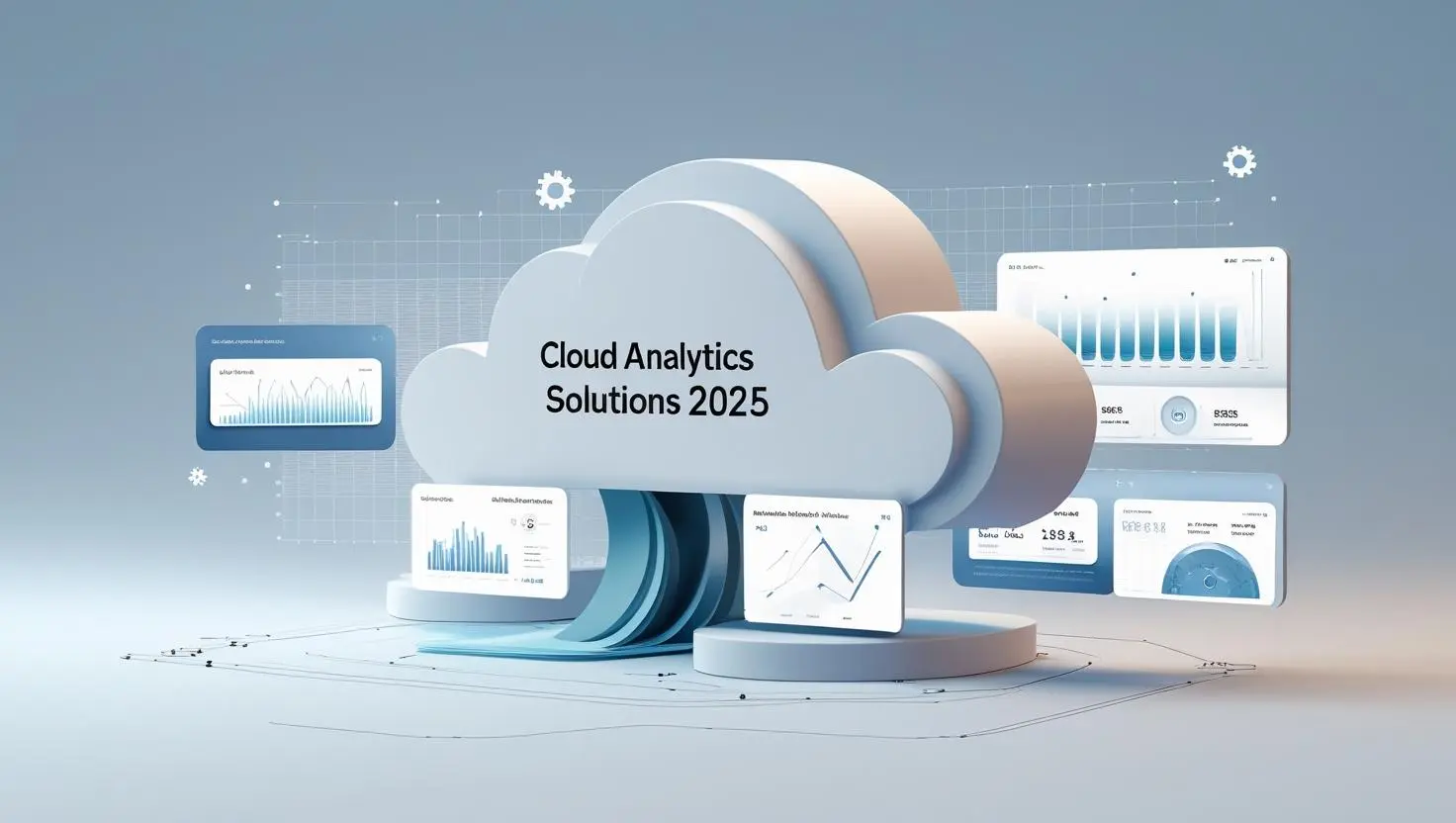What Is Cloud Analytics?
Cloud analytics solutions help you collect, process, and understand data using cloud-based tools and services. Instead of using expensive hardware and complex software, you can use the internet to access powerful systems that turn your data into useful insights.
As companies handle more and more data from websites, apps, sensors, and daily operations, cloud analytics gives you an easier, faster, and cheaper way to make smart decisions.
How Cloud Analytics Works
Cloud analytics solutions work step by step:
Collecting Data
They pull data from different sources like spreadsheets, websites, machines, and apps, either all at once or continuously.
Storing Data
That data gets saved in secure online storage systems like Google BigQuery or Amazon Redshift.
Cleaning and Organizing
The data is cleaned and arranged so it’s easy to understand. Think of it like organizing your messy desktop.
Visualizing and Reporting
Tools like Domo, Sigma, or Tableau create dashboards and charts so you can actually see what’s going on.
Predicting with AI
Some tools even use artificial intelligence to predict future trends or find hidden patterns you might miss.
Types of Cloud Analytics Solutions
- Public Cloud: Shared by many users, easy to scale, and cost-effective (e.g., AWS, Azure)
- Private Cloud: Built just for one organization, offering more control and privacy
- Hybrid Cloud: Mixes public and private setups for flexibility
- Multi-cloud: Uses services from multiple cloud providers for better performance or backup
Key Features & Capabilities
Easy Data Collection
Connects with tools like Excel, Salesforce, Google Analytics, and more
Powerful Storage and Speed
Handles large amounts of data quickly without slowing down
Built-in Analysis Tools
Let’s you sort, filter, and explore data without needing to code
Smart Predictions
Uses AI to forecast trends or catch problems early
Strong Security
Protects data with encryption, access controls, and compliance with privacy laws
Clear Dashboards
Shows your data in charts and visuals that you can share with your team
Benefits & Business Impact
- Scales easily: Grows with your business—no need to buy extra servers
- Real-Time Results: Get answers fast when decisions matter
- Lower Costs: Only pay for what you use, no upfront investments
- Team Collaboration: Everyone can access the same dashboards from anywhere
- Drives Innovation: Test new ideas faster with cloud tools
Choosing the Right Cloud Analytics Platform
What to Think About:
- How much data do you have?
- Can it connect to your current tools?
- Is it easy to use?
- Does it meet your industry’s privacy rules?
- Does the cost match your budget?
Quick Checklist:
- ☑ Works with your data sources
- ☑ Easy to grow as your data grows
- ☑ Gives real-time insights
- ☑ Meets security standards
- ☑ Simple, clear dashboards

Top Platforms Compared (2025)
1. Splunk Cloud Platform
Best for tracking technical and machine data in real-time. Great for IT and security teams.
2. Domo
User-friendly with a focus on business users. Connects easily with many sources and has strong visual tools.
3. Sigma Computing
Feels like using a spreadsheet but powered by the cloud. Perfect for people who love Excel but need more power.
4. Google BigQuery
Great for fast analysis on huge amounts of data. Ideal for companies with technical teams.
5. Tableau Cloud
Focuses on visuals and storytelling. A top choice for making data easy to understand and present.
Real-World Use Cases & Case Studies
Marketing Teams
Use cloud analytics solutions to see which ads work best, track campaign results, and understand customer behavior.
Finance Departments
Keep an eye on budgets, spot unusual spending, and predict future cash flow.
Operations Teams
Monitor inventory, delivery times, and process efficiency to keep everything running smoothly.
Healthcare Providers
Use cloud analytics solutions to improve patient care by analyzing treatment outcomes and managing resources better.
Best Practices & Architecture Tips
- Always clean your data before analyzing
- Keep storage, analysis, and dashboards separate for better performance
- Use role-based access so only the right people see the right data
- Add AI tools to help spot trends and automate tasks
- Watch your cloud costs—set limits and alerts to stay on budget
Future Trends
- AI That Talks Back: Ask your data questions in plain English
- Live Data Streams: Analyze data as it happens, not later
- Edge Analytics: Run analysis closer to where data is created (like on devices or sensors)
- Data Mesh: Teams manage their data, but still work together
Conclusion & Getting Started
Cloud analytics solutions are changing how businesses of all sizes make decisions. Whether you’re tracking customer behavior, improving operations, or forecasting finances, cloud tools help you do it faster and smarter.
Want to start using cloud analytics? Try a free tool, test a small project, or talk to a trusted analytics consultant. The sooner you start, the sooner you’ll see real results.
Frequently Asked Questions (FAQs)
1. What is a cloud analytics solution?
Cloud analytics solutions are devices and services used by business that enable them to analyze their data through cloud services. You can collect, store, and analyze data without needing to invest in physical servers or comprehensive software stacks.
2. How do cloud analytics systems operate?
These are products that ingest data from disparate sources, hold it in the cloud, analyze it with an analytics engine, and provide it in dashboards or reports. Some platforms also utilize artificial intelligence to identify trends or predict future outcomes.
3. What are the advantages of cloud analytics solutions?
Primary advantages are the real-time overview and optimization of costs, the solution provides a flexible, low-cost solution, and also higher collaboration, greater agility, and faster decision making. Cloud analytics solutions also removes the overhead of heavy infrastructure.
4. Are security cloud analytics solutions safe?
Yes, some of them have enhanced security capabilities, such as data encryption, role-based access control, and so on, and compliance with standards like GDPR and HIPAA. Make sure that you select a provider in line with the security requirements of your industry.
5. What are some examples of cloud analytics platforms?
Favorited vendors may include Splunk, Domo, Sigma Computing, Google BigQuery, and Tableau Cloud. Each has its own merits, depending on the specifics of your business and its potential weaknesses.
6. What are the key criteria for a cloud analytics platform?
Seek ease of use, live views, integration with your existing tools, security, and pricing. A great platform can grow with your business.

